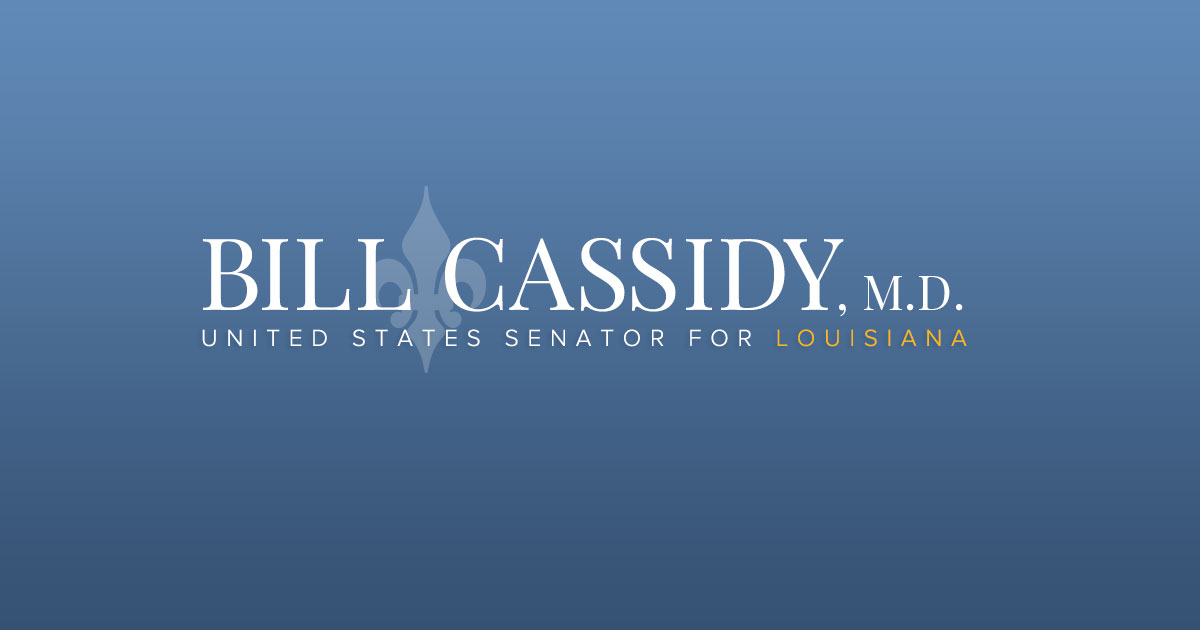Source: United States Senator for Louisiana Bill Cassidy
WASHINGTON – U.S. Senators Bill Cassidy, M.D. (R-LA) and Mazie Hirono (D-HI), members of the Senate Committee on Veterans’ Affairs, today urged the Biden administration to provide greater transparency on its efforts to reduce opioid overdose-related deaths. Specifically, the senators asked the Department of Veterans Affairs Secretary Denis McDonough about how effective the VA’s Opioid Safety Initiative (OSI) has been at combatting the opioid epidemic among veterans. They also asked the secretary to identify which barriers Congress must remove to enable better public-private partnerships to expand veterans’ access to testing and treatment for opioid use disorder.
“Members of the Committee and the VA are equally invested in facilitating timely and high-quality mental health and substance use related care to those that have given so much to ensuring the security of our country,” wrote the senators. “Our collective objective should be to guarantee their safety, by reducing inappropriate opioid prescribing, providing access to a full range of pain therapeutic options when appropriate, and driving down illicit substance use and associated tragedies of overdose deaths and suicides among veterans.”
“We trust that you will expeditiously address the questions we have raised here in service of further enhancing the VA’s progress toward this critical mission,” continued the senators.
Read the full letter here or below.
Dear Secretary McDonough,
We appreciated your recent end-of-year report to the Senate Committee on Veterans’ Affairs on the state of the Department of Veterans Affairs (VA), especially information pertaining to the Veterans Health Administration (VHA). Members of the Committee and the VA are equally invested in facilitating timely and high-quality mental health and substance use related care to those that have given so much to ensuring the security of our country. Our collective objective should be to guarantee their safety, by reducing inappropriate opioid prescribing, providing access to a full range of pain therapeutic options when appropriate, and driving down illicit substance use and associated tragedies of overdose deaths and suicides among veterans. We therefore ask for clarification on VHA’s efforts toward achieving that goal:
- Since 2013, under the national expansion of the VA’s Opioid Safety Initiative (OSI), several steps have been taken to reduce unsafe prescribing practices. However, major safety gaps still remain in the system. For instance, the national minimum requirement for VHA prescribers to check Prescription Drug Monitoring Program (PDMP) records for their patients taking controlled substances is currently only once a year. Can VA provide data on the absolute number of and percentage of prescribers meeting this bare minimum requirement versus those checking PDMP records more frequently? What obstacles prevent VHA from raising the minimum frequency to at least once every 90 days and prior to every opioid prescription, as is the standard of care outside the VA?1
- Despite the national epidemic of opioid dependence and overdose deaths, VHA allows each Veterans Integrated Services Networks (VISNs) and even each Veterans Affairs Medical Center (VAMC) to determine whether to and how to implement site-wide controlled substance utilization monitoring programs. One of the key advantages of having an integrated national VHA system is that veterans can access VHA services anywhere in the country without restriction. Why has VHA not taken advantage of this feature of its system to mandate an integrated nationwide controlled substance monitoring program across all VAMCs/VISNs? What obstacles prevent VA from creating such a program?
- Research published by VA staff and providers indicates that by the end of 2019, there were still about 9% of veterans on long-term opioid therapy that did not have written informed consent documented, about 10% without urine drug screens, 11% without PDMP queries, and 50% who were at very high risk for overdose/suicide without an interdisciplinary team review.2 We appreciate the VHA issuing a new notice on December 1st, 2021 that addresses the deficit in interdisciplinary team review.3 What action has VHA taken to close the remaining gaps in safe prescribing of opioids to vulnerable veterans?
- OSI is credited with reducing the number of veterans being prescribed a combination of opioid & benzodiazepine by 87%, long-term opioids by 70%, and very high dose opioids by 80%4. Yet, in a study published July 2019, an analysis of VHA data indicates overall rate of opioid overdose among veterans increased from 14 per 100,000 person-years to 21 per 100,000 person-years, driven by an increase in usage of heroin and synthetic opioids (primarily fentanyl and its analogues).5 However, VHA staff have reported that their hands are tied by burdensome VA regulation that prevents the VHA from partnering with industry to expand testing capacity for synthetic opioids. What regulatory barriers can be removed by the VA and Congress to increase testing capacity and utilization, and by extension, monitoring, of synthetic opioid use among veterans?
- An August 2021 report in the Washington Post showed that after the introduction of the OSI, suicides among rural veterans increased by about 75% and among urban veterans by about 30%.6 Has VA investigated the claims in the report that the success of OSI may have inadvertently created conditions leading to an increase in veteran suicide? Has VA made any changes in OSI or the Department’s approach to suicide prevention that take into account the impact of a reduction in access to prescription opioids, especially in rural areas, such as near the southern border where illicit opioids often enter the country? How has VHA ensured that, in cases where the benefits of prescription opioid therapy outweigh the risk of side effects, veterans are not losing access to this treatment under broad directives to reduce opioid prescribing?
Under Congress’ direction through the VA MISSION Act of 2018, the VHA has taken meaningful steps to improve the quality of care provided for our nation’s veterans and ensure their safety. We trust that you will expeditiously address the questions we have raised here in service of further enhancing the VA’s progress toward this critical mission. Thank you and we look forward to your response.
###
